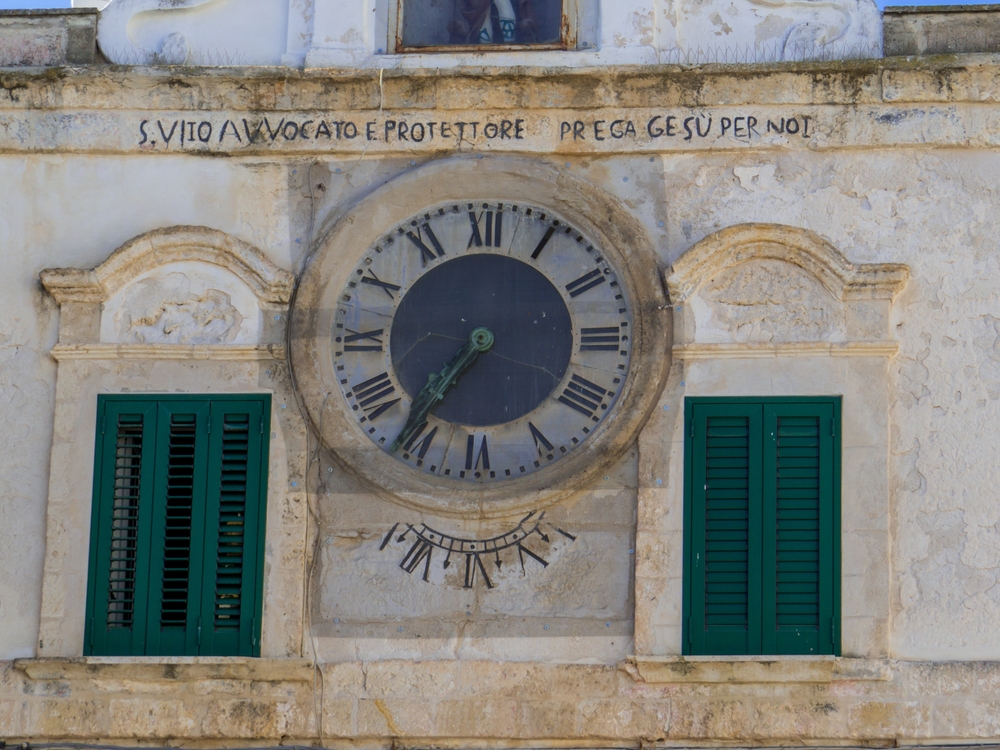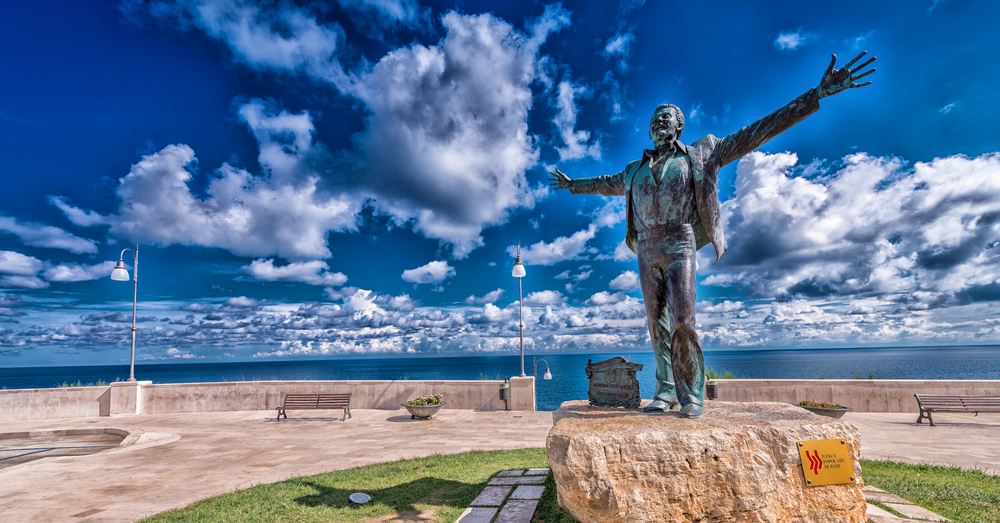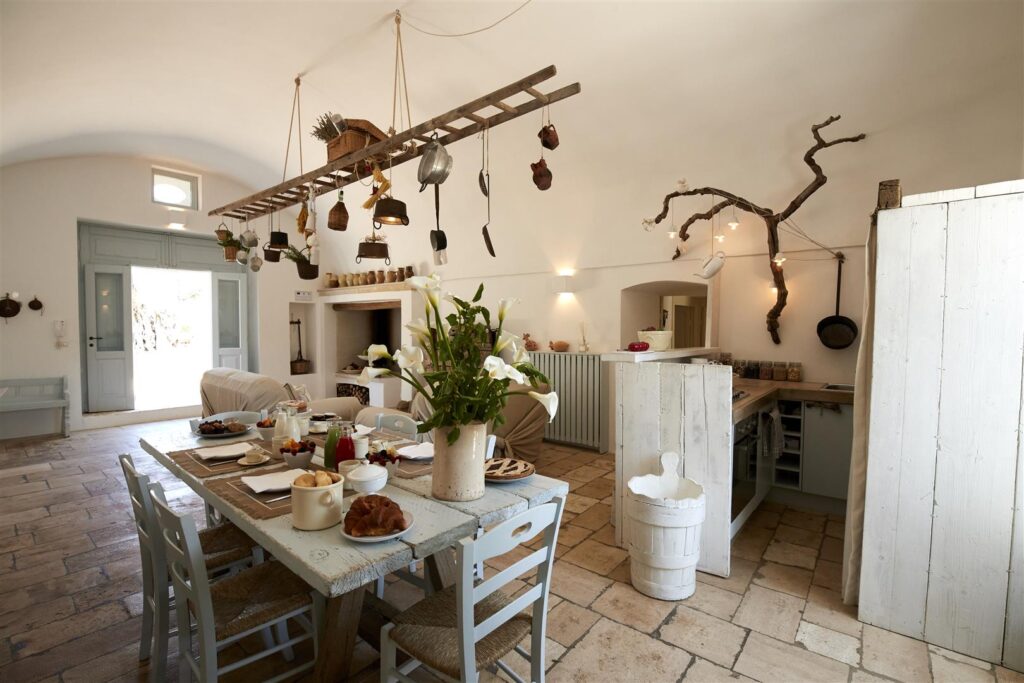Spotlight on Polignano a Mare
Like many of Puglia’s town and cities, Polignano a Mare has an extremely rich and varied history. Its origins actually date as far back as the Greeks of the 4th century BC. The seaside town subsequently thrived under Roman rule and it’s still possible to see some evidence of the Roman occupation just north of the historic centre of town at the bridge at Lama Monachile, a bridge that you will need to walk underneath if you want to visit the beach here. Over the years, the strategic position of the town on the Adriatic Sea certainly saw it prosper under a number of rulers including the Byzantines, Normans and Aragonese.
What to see and do in Polignano a Mare
These days, if you’re visiting Polignano a Mare for the first time, it’s worth heading straight for the centro storico. As you pass through the Porta Vecchia, you’ll enter the charming old town, characterised by whitewashed streets and buildings which are typical of this region. The towns main square is the Piazza Vittorio Emanuele II and there is no better place than to spend an hour relaxing with a coffee or enjoying an aperitivo and just watch the people go by! The square is also home to the late 13th century Chiesa Matrice Santa Maria Assunta and its 22 metre bell tower, inside which you’ll find a collection of statues by Stefano da Putignano. Also in the main square is the medieval Palazzo dell’Orologio (Clock Palace) where you will find a 19th century rope clock in the place of a sundial along with a statue of Polignano’s patron saint, San Vito, and a bell tower.

Take your time whilst you stroll through the town’s narrow streets, popping into some of the many small shops that line them. And watch out for the poetry on your way. The poet, Guido Lupori, is one of the town’s most famous residents. He was born in Bari but moved to Polignano a Mare in the mid 1980s to pursue his dream of becoming a writer. Upon his arrival in the town, he literally started to fill the streets with his favourite poems and verses and you’ll now find poems by him all over town. His artwork is usually signed with the signature ‘Guido Il Flaneur‘, reflecting the way in which he sees himself as a man simply wandering through the streets observing what is around him. Probably the most famous street is the Vicolo della Poesia though, a tiny alleyway where you’ll discover his famous poetry steps. Stay long enough in town and you may even come across the man himself!
The town’s other famous resident was Domenico Modugno. Whilst you may not recognise the name, we’re pretty sure you’ll recognise his most famous song – Nel blu dipinto di blu – more commonly known around the world as Volare. He was born in Polignano a Mare in 1928 and there is now a 3 metre tall statue of him that takes pride of place overlooking the sea.

Whichever way you take to explore the historic centre of town, you’re bound to eventually reach one of the three panoramic terraces that the town can boast. All three afford beautiful views of the Adriatic Sea and glimpses of the buildings perched on the cliff tops. However, our favourite of these is the Terrazza Santo Stefano, more affectionately known as the Balconata sul Mare (Balcony over the sea) which boasts incredible views over the Adriatic Sea and along the coast in both directions as well as down onto the town’s famous beach.
As well as the the three main terraces in the historic centre, there is another lovely viewpoint at Pietra Piatta, reached via a grand staircase called the Scalinata Volare (so named after Modugno’s song). This viewpoint gives you a lovely view back towards the beach from the other side of the cliffs.
And if you’re visiting during the warmer Spring and Summer months, then you might want to extend your time in Polignano a Mare by enjoying a few hours relaxing on the town’s pebbled Blue Flag beach – Cala Porto or Lama Monachile. It’s flanked on both sides by steep cliffs which provide an endless source of amusement for children and teenagers who jump and dive from here into the crystal clear waters below.
Once you have explored the historic centre, then head for a walk along the Lungomare Cristoforo Colombo, a seafront promenade that takes you along the coast and from where you can continue to admire the incredible views over the Adriatic. This is there you will also find the town’s contemporary art museum – the Fondazione Museo Pino Pascali – which sits in a rather spectacular position overlooking the sea. The museum was built to honour renowned Apulian artist Pino Pascali whose parents were from Polignano a Mare. The museum exhibits works by the artist himself as well as by up and coming artists who have won the Pino Pascali Prize. Entrance only costs a few euros.
If you’ve made your way this far, then you will also be rewarded with a glimpse of San Antonio island, an island no bigger than the size of a large rock that sits just off the coast. Affectionately known as Hermit Island (Scoglio dell’ Eremita), legend has it that the island was supposedly once home to a missionary. This man had dedicated himself to a life of solitude and contemplation on the island after returning from a pilgrimage to the Holy island. Fisherman used to take him food to ensure he could survive. The Chapel of San Antonio Abate was built on the island in the 17th century in memory of the man but was later destroyed after the island was used as a quarantine station due to a cholera epidemic. These days, the only thing left to be seen on the island is a solitary iron cross.

Finally, if you fancy getting out on the water and seeing Polignano a Mare from a different angle, then why not try a boat tour exploring the many caves that are dotted along this stretch of coastline.
Events in Polignano a Mare
Polignano a Mare has played host to the annual cliff diving championships for a number of years. Sponsored by Red Bull, the event attracts crowds of around 50,000 people each year as divers leap off a 28 metre high platform into the sea below. We can’t guarantee that the event will always take place here as the venues can change each year, but it’s definitely worth checking the schedule to see.
Otherwise, at the end of August each year, there is Mareviglioso, an annual event that celebrates the marvels of the sea! It’s a chance to enjoy some terrific sea food and to learn more about the fishing traditions of this area. It’s also a festival which is full of fun and festivities, where the streets of the town will be filled with food and craft stalls, street performers and exhibitions, all to the sound of Domenico Modugno’s music in the background! There is even a palio as part of the event during which the fishing fleet is blessed and a parade of boats will take to the water.
There is just as much to keep you entertained in Polignano a Mare in the Winter too, particularly in the period running up to Christmas. For the three weeks prior to the 25th December, Polignano a Mare is transformed into a winter wonderland. A huge Christmas tree takes pride of place in the Piazza Vittorio Emanuele – along with a Christmas market and the largest Santa’s grotto in Puglia.
Where to eat in Polignano a Mare
The most famous restaurant in Polignano a Mare is the Grotta Palazzese. Personally, whether it’s worth the hype probably depends on what’s most important to you – the location of a restaurant or the food. Certainly, as the only cave restaurant in Italy, the setting is incredible but in our opinion, the food just isn’t worth the hefty price tag and you’ll find far, far better quality elsewhere. Incidentally, if you want to see the restaurant for yourself, go to the terrace at the end of Via Gelsomino in town.
A couple of the restaurants we recommend are Antiche Mura or, if you’re looking for a restaurant with a view, then try Terrazze Monachile. And, for the best gelato, definitely head to Gusto Caruso on Via Martiri di Dogali.
Where to stay in Polignano a Mare
Apartment Gelso is a stunning 2 bedroom apartment near Polignano a Mare, perfect for a couple or family wanting to explore this part of Puglia. It boasts a luxurious setting with a large communal pool within the estate for guests to enjoy. There is also a shuttle bus that can take you from the apartment to the historic town centre.

Alternatively, if you’re looking for a hotel in Polignano a Mare, then check out Expedia for a great range of Polignano a Mare hotels at great rates.
How to travel to Polignano a Mare
If you’re working out the easiest, quickest or cheapest way to get to Polignano a Mare, try out Omio, a really helpful website, aimed at simplifying journey planning. It has all travel methods – air, train or bus – and will allow you to easily compare the different options as well as to book tickets.
By train: Polignano a Mare has its own train station. It will take about 30 minutes by train to get to Polignano a Mare from Bari. Top tip: Sit on the left side of the train if you want to make the most of the sea views en route! It’s an easy walk from the train station to the historic centre.
By bus: Buses go to Polignano a Mare from a number of towns and villages in the region.
By car: Polignano a Mare is easy to reach by car. However, the historic centre of Polignano a Mare is a Zona Traffico Limitato (ZTL) so don’t try and drive within it if you want to avoid receiving a hefty fine. Instead, look out for the designated car park signs and head there instead.
By air: Bari airport is about a 45 minute drive from Polignano a Mare. It’s also possible to fly into Brindisi airport which is approximately 55 minutes away by car.


